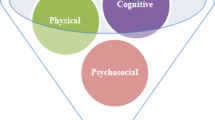Abstract
In the past technology products created to overcome accessibility and usability issues experienced by individuals with special needs have also resulted in greater usability for the wider population. Technology is increasingly being seen as a key component within the education of children with special needs and recently researchers have developed tailored approaches to involving this population in designing the technology. However, it is not known if these approaches could also benefit participation in a wider population. This paper investigates the potential benefits of using a new structured and supportive participatory design (PD) approach IDEAS, tailored to the specific needs of children with autism spectrum disorders (ASD), for mainstream schoolchildren. The development of this new approach is guided by the TEACCH program and additionally draws on ideas from existing PD approaches for children. A study has been undertaken to trial this approach with four design teams, two teams including children with ASD and two teams including mainstream schoolchildren. Their design task was to develop a mathematics game over a series of six design sessions following the IDEAS approach. The findings reveal that a structured and supportive PD approach can benefit both children with ASD and mainstream children. However, these benefits varied between and within different groups, with some children requiring the additional structure/support more than others. Future work intends to build upon these findings to develop a PD toolbox for a broader child population, enabling researchers to provide appropriate tailored support based on children’s individual characteristics and needs.







Similar content being viewed by others
References
APA. (2000). DSM-IV. Diagnostic and Statistical Manual of Mental Disorders (4th edition text revision) (4th ed.). Washington, DC: American Psychiatric Association.
Benton, L., Johnson, H., Ashwin, E., Brosnan, M., & Grawemeyer, B. (2012). Developing IDEAS: Supporting Children with Autism within a Participatory Design Team. In Proceedings of the SIGCHI conference on Human factors in computing systems (pp. 2599–2608). Austin, Texas, USA: ACM Press. doi: 10.1145/2207676.2208650.
Benton, L., Johnson, H., Brosnan, M., Ashwin, E., & Grawemeyer, B. (2011). IDEAS: An interface design experience for the autistic spectrum. In Proceedings of the SIGCHI conference extended abstracts on Human factors in computing systems (pp. 1759–1764). Vancouver, Canada: ACM Press. doi: 10.1145/1979742.1979841.
Braun, V., & Clarke, V. (2006). Using thematic analysis in psychology. Qualitative Research in Psychology, 3, 77–101. doi:10.1191/1478088706qp063oa.
Craig, J., & Baron-Cohen, S. (1999). Creativity and imagination in autism and Asperger syndrome. Journal of Autism and Developmental Disorders, 29, 319–326. doi:10.1023/A:1022163403479.
Dickinson, A., Eisma, R., & Gregor, P. (2003). Challenging interfaces/redesigning users. In Proceedings of the 2003 conference on Universal usability (pp. 61–68). Vancouver, British Columbia, Canada: ACM. doi: 10.1145/960201.957217.
Dolan, R. P., & Hall, T. E. (2001). Universal design for learning: Implications for large-scale assessment. IDA Perspectives, 27(4), 22–25.
Druin, A. (1999). Cooperative inquiry: developing new technologies for children with children. In Proceedings of the SIGCHI conference on Human factors in computing systems (pp.592–599). Pittsburgh, USA: ACM Press. doi: 10.1145/302979.303166.
Druin, A. (2002). The role of children in the design of new technology. Behaviour and IT, 21, 1–25. doi:10.1080/01449290110108659.
Gibson, L., Gregor, P., & Milne, S. (2002). Case study: Designing with difficult children. In Proceedings of the 1st International Conference for Interaction Design and Children (pp.42–52). Eindhoven, The Netherlands: Shaker Publishing.
Guha, M.L., Druin, A., Chipman, G., Fails, J., Simms, S., & Farber, A. (2004). Mixing ideas: a new technique for working with young children as design partners. Proceedings of the 3rd International Conference for Interaction Design and Children (pp.35–42). Maryland, USA: ACM Press. doi: 10.1145/1017833.1017838.
Guha, M.L., Druin, A., & Fails, J. (2008). Designing with and for children with special needs: An inclusionary model. In Proceedings of the 7th International Conference for Interaction Design and Children (pp.61–64). Chicago, USA: ACM Press. doi: 10.1145/1463689.1463719.
Guha, M. L., Druin, A., & Fails, J. A. (2013). Cooperative inquiry revisited: Reflections of the past and guidelines for the future of intergenerational co-design. International Journal of Child-Computer Interaction, 1(1), 14–23. doi:10.1016/j.ijcci.2012.08.003.
Kelly, S.R., Mazzone, E., Horton, M., & Read, J.C. (2006). Bluebells: A Design Method for Child-Centred Product Development. In Proceedings of the 4th Nordic conference on Human-computer Interaction (pp.361–368). Oslo, Norway: ACM Press. doi: 10.1145/1182475.1182513.
Large, A., Nesset, V., Beheshti, J., & Bowler, L. (2006). “Bonded design”: A novel approach to intergenerational information technology design. Library & Information Science Research, 28, 64–82. doi:10.1016/j.lisr.2005.11.014.
Mesibov, G. B., Shea, V., & Schopler, E. (2007). The TEACCH approach to autism spectrum disorders. New York: Springer.
Moraveji, N., Li, J., Ding, J., O’Kelley, P., & Woolf, S. (2007). Comicboarding: using comics as proxies for participatory design with children. In Proceedings of the SIGCHI conference on Human Factors in Computing Systems (pp.1371–1374). San Jose, USA: ACM Press. doi: 10.1145/1240624.1240832.
Piaget, J. (1977). The essential Piaget. New York: Basic Books.
Read, J., & MacFarlane, S. (2006). Using the fun toolkit and other questionnaire methods to gather opinions in child computer interaction. In Proceedings of the 2006 on Interaction Design and Children (pp.81–88). Tampere, Finland: ACM Press. doi: 10.1145/1139073.1139096.
Vygotsky, L. S. (1978). Mind in society: The development of higher psychological processes. Cambridge: Harvard University Press.
Author information
Authors and Affiliations
Corresponding author
Additional information
We would like to thank all the pupils and teachers who took part in this research. The first author would also like to thank Mike Ashworth for her PhD funding.
Rights and permissions
About this article
Cite this article
Benton, L., Johnson, H. Structured approaches to participatory design for children: can targeting the needs of children with autism provide benefits for a broader child population?. Instr Sci 42, 47–65 (2014). https://doi.org/10.1007/s11251-013-9297-y
Received:
Accepted:
Published:
Issue Date:
DOI: https://doi.org/10.1007/s11251-013-9297-y




